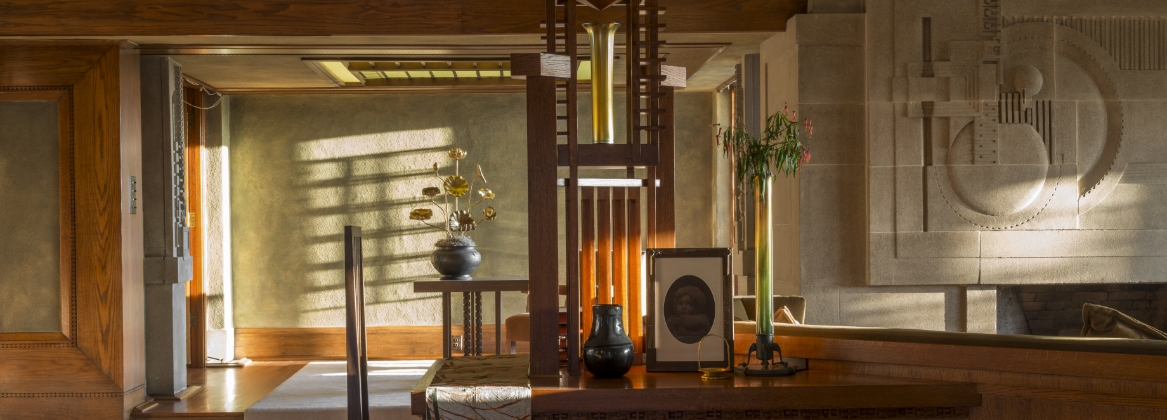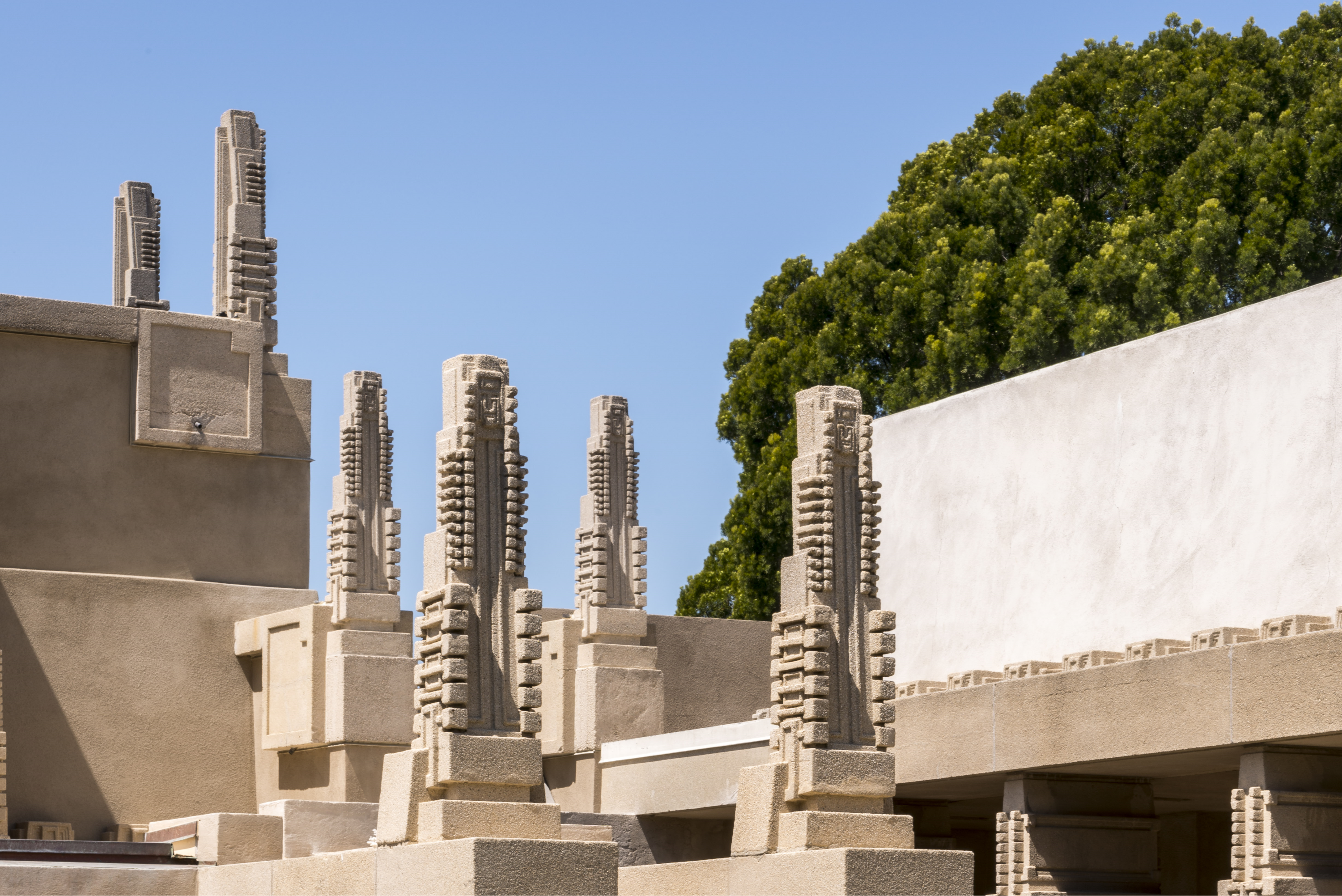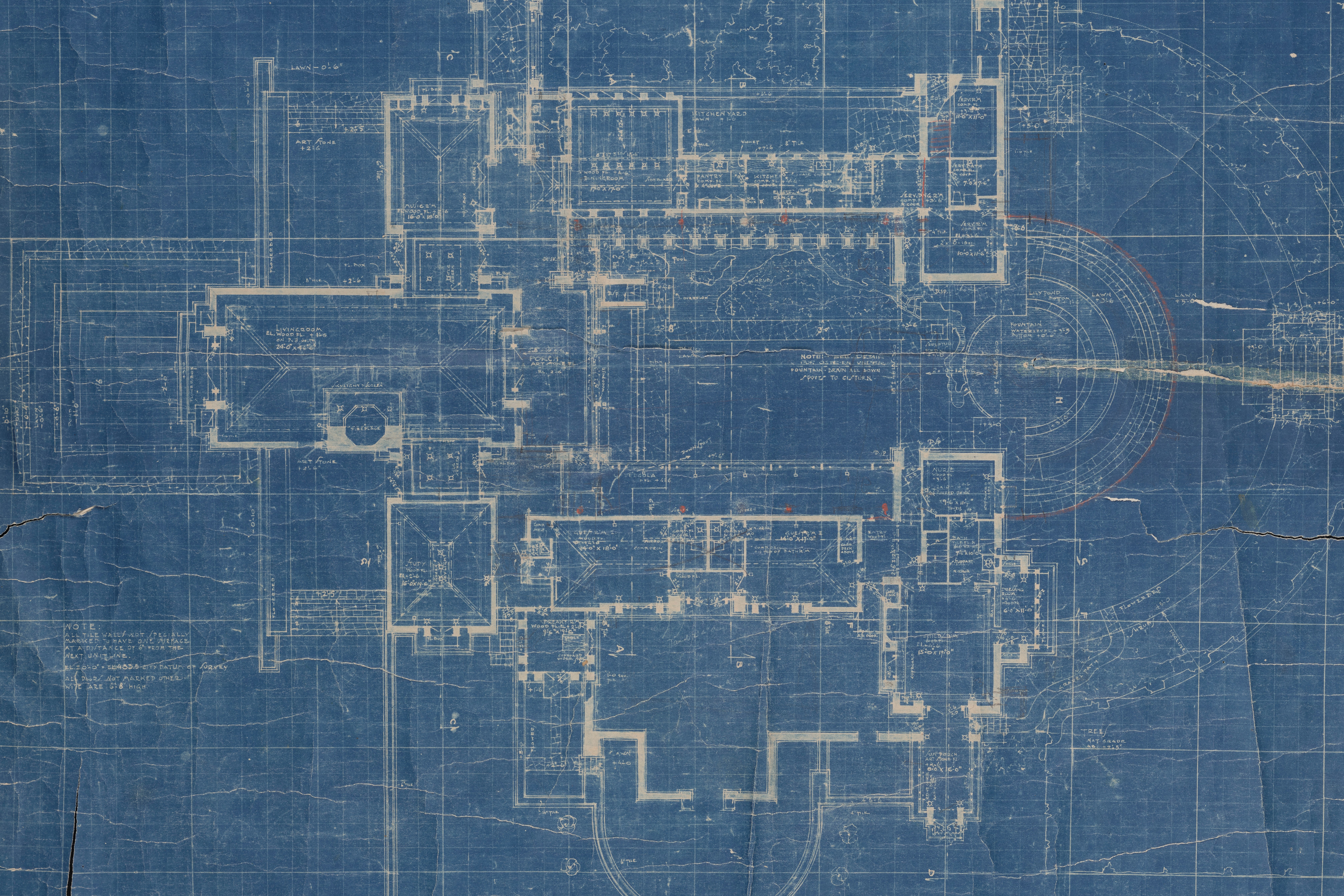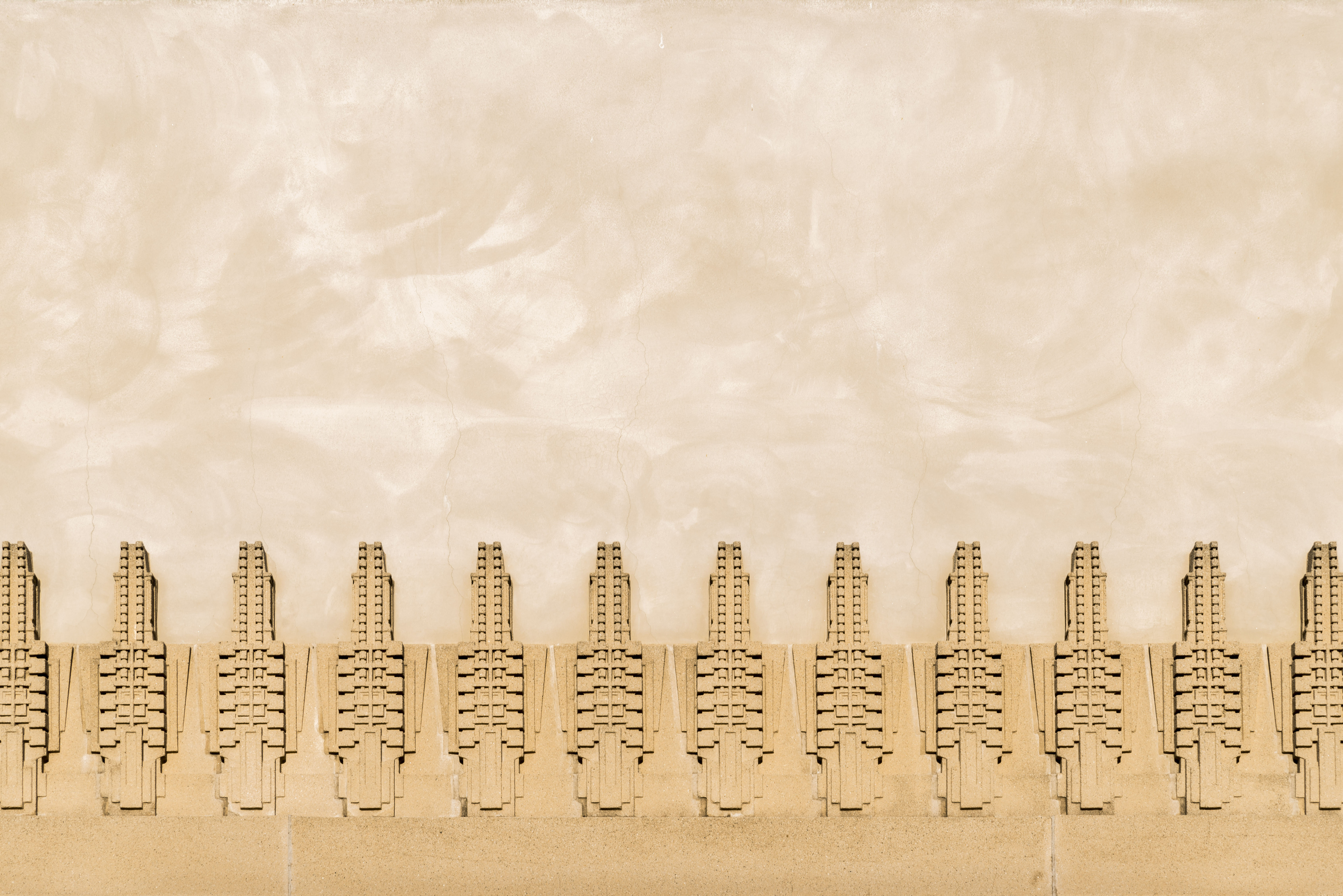A UNESCO World Heritage Site
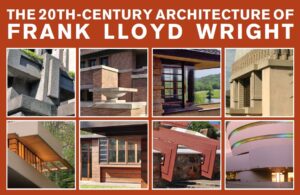 On July 10, 2019, Hollyhock House was inscribed on the UNESCO World Heritage List as part of “The 20th-Century Architecture of Frank Lloyd Wright,” which includes eight sites spanning 50 years of Wright’s career. The collection represents the first modern architecture designation for the U.S. In addition to Hollyhock House (Los Angeles’s only World Heritage Site), the group inscription includes Unity Temple (constructed 1906-09, Oak Park, Illinois), the Frederick C. Robie House (constructed 1910, Chicago), Taliesin (begun 1911, Spring Green, Wisconsin), Fallingwater (constructed 1936-39, Mill Run, Pennsylvania), the Herbert and Katherine Jacobs House (constructed 1936-37, Madison, Wisconsin), Taliesin West (begun 1938, Scottsdale, Arizona), and the Solomon Guggenheim Museum, (completed 1959, New York).
On July 10, 2019, Hollyhock House was inscribed on the UNESCO World Heritage List as part of “The 20th-Century Architecture of Frank Lloyd Wright,” which includes eight sites spanning 50 years of Wright’s career. The collection represents the first modern architecture designation for the U.S. In addition to Hollyhock House (Los Angeles’s only World Heritage Site), the group inscription includes Unity Temple (constructed 1906-09, Oak Park, Illinois), the Frederick C. Robie House (constructed 1910, Chicago), Taliesin (begun 1911, Spring Green, Wisconsin), Fallingwater (constructed 1936-39, Mill Run, Pennsylvania), the Herbert and Katherine Jacobs House (constructed 1936-37, Madison, Wisconsin), Taliesin West (begun 1938, Scottsdale, Arizona), and the Solomon Guggenheim Museum, (completed 1959, New York).
Timeline
| 1919 | Aline Barnsdall purchased Olive Hill (36 acres) for $300,000 |
| 1919-1921 | Hollyhock House constructed (planned cost: $50,000; actual cost: approximately $150,000). |
| 1927 | Hollyhock House and 11 acres donated by Aline Barnsdall to City of Los Angeles as an art park honoring her late father, Theodore Barnsdall. |
| 1927-1942 | California Art Club used Hollyhock House as its headquarters. |
| 1942-1946 | Hollyhock House sat vacant. |
| 1927-1942 | California Art Club used Hollyhock House as its headquarters. |
| 1946-1948 | Hollyhock House rehabilitation financed by Dorothy Clune Murray, who established the Olive Hill Foundation at Hollyhock House until 1956. |
| 1954 | Residence B, a Frank Lloyd Wright-designed guest house, was demolished. |
| 1954 | Frank Lloyd Wright-designed temporary art gallery constructed to host the exhibition Frank Lloyd Wright: Sixty Years of Living Architecture. It was demolished in 1969. |
| 1967 | Barnsdall Junior Arts Center constructed (architects Hunter and Benedict with Kahn, Farrell and Associates). |
| 1971 | Los Angeles Municipal Art Gallery constructed (architects Wehmueller and Stephens). |
| 1974-1976 | Hollyhock House underwent a major restoration by the City of Los Angeles. |
| 1976 | Hollyhock House opened to the public as a house museum. |
| 2010-2014 | Hollyhock House restored with $4.36 million in funding from the City of Los Angeles, California Cultural and Historical Endowment, and the National Park Service. |
| 2016 | City of Los Angeles begins restoration of Residence A, the remaining Frank Lloyd Wright-designed guest house. |
| 2019 | Hollyhock House added to UNESCO World Heritage List along with seven other Frank Lloyd Wright structures. |
| 2021 | City of Los Angeles completes phase I of the Residence A restoration, including structural and seismic retrofits, building system upgrades, and reinstating exterior finishes. Phase II work begins and will provide interior detailing, furnishings, and finishes, as well as exterior landscaping to reopen the site to the public. |

